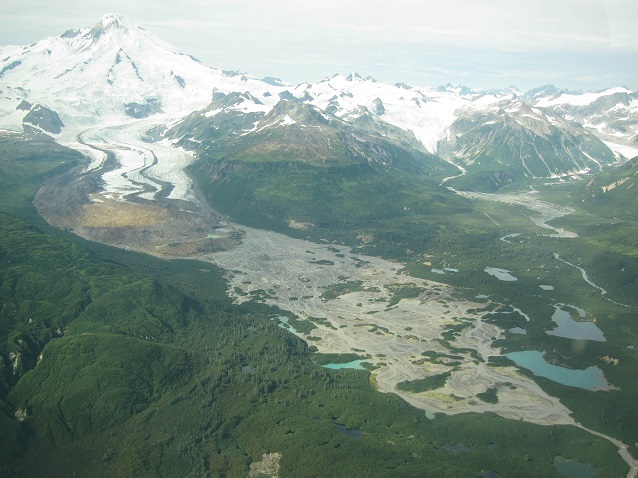Outwash plains and eskers form due to the flow of meltwater in front of (outwash plains) or beneath (eskers) that glacier ice. They are composed of glacial sediments that have been reworked by flowing water.
Outwash Plains

NPS Photo
Outwash plains occur in front of melting glaciers. They are expansive, generally flat areas that are dominated by braided rivers when the glacier is actively melting. In areas that were once glaciated, old outwash plains can be found by looking for glacial sediment (till) that has been sorted by grain or boulder size as it is picked up and deposited by flowing water. This means that the sediment is typically finest farthest away from the glacier. Outwash plains can extend for miles beyond the glacier margin.
Eskers
Eskers are meandering ridges of sediment that form in water channels beneath or within the glacier ice. The floors of these channels can be rock, sediment, or ice. As water speeds in the channels slow (during retreat or during periods of low melt), it drops the sediment it carries and builds small piles that take on the shape of the channels.
To learn more about glaciers, glacier features, and glacial landforms, see the Glaciers & Glacial Landforms Page.
Part of a series of articles titled Glacier Landforms.
Previous: Drumlins
Last updated: February 22, 2018
